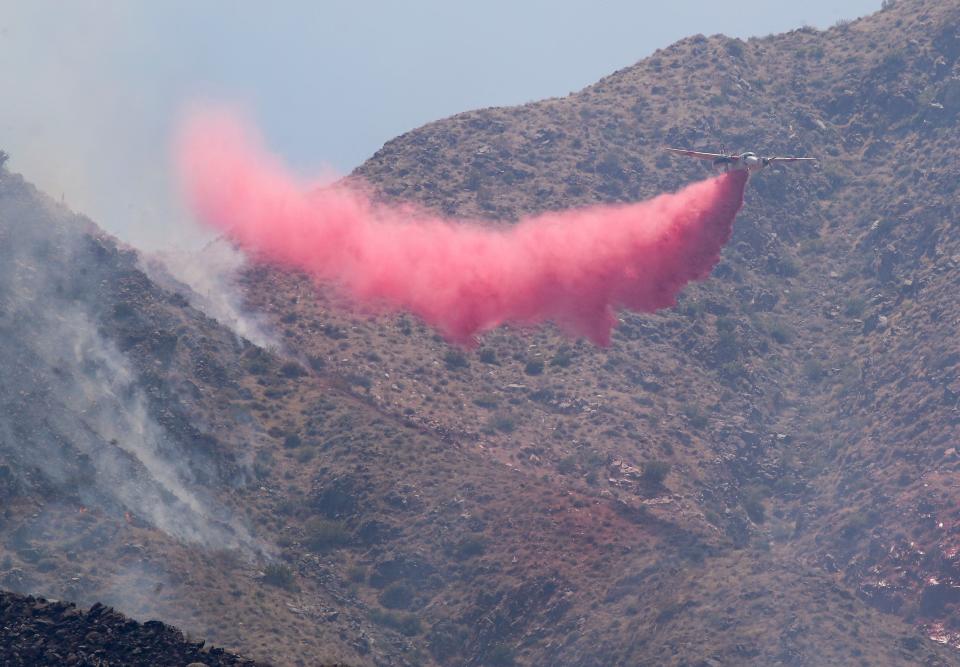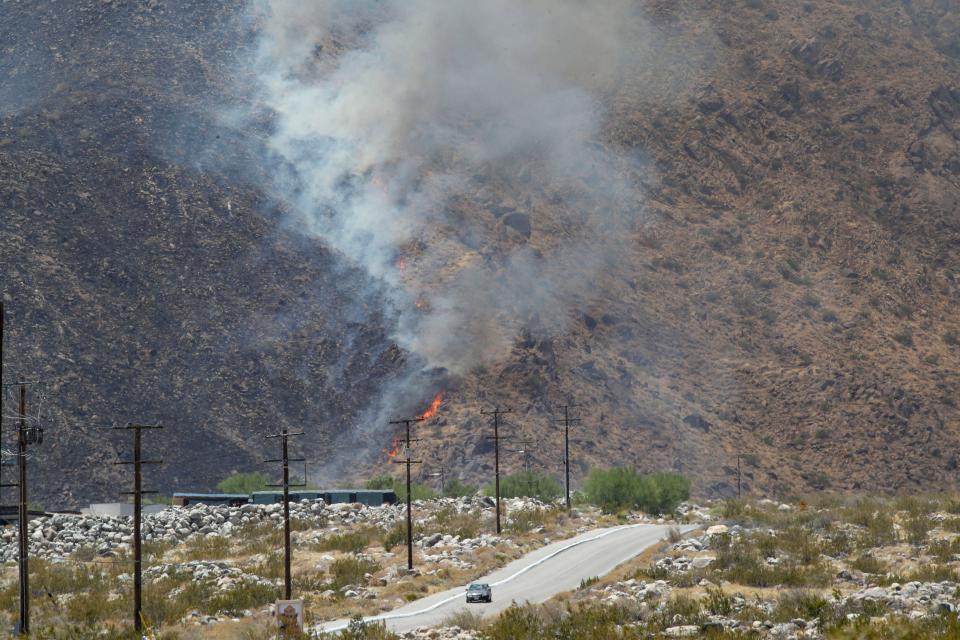Southern California fire season off to a bad start. What's the forecast from here?
Any hopes that California’s wet winter would result in a slower and calmer start to the fire season went up in, well, flames this month as multiple major early blazes torched thousands of acres across the state.
Data posted by Cal Fire shows that the amount of land burned by fires statewide so far in 2024 — about 113,000 acres through Friday — is about six times the average for this point in the year. That’s despite the number of fires being down by about 300 from the five-year average.
Southern California has been among the areas hit by the blazes: The year’s second largest – the Post Fire – burned nearly 16,000 acres northwest of Santa Clarita. Closer to home, the Tuscany Fire burned around 126 acres just west of Palm Springs.
Eric Drewitz, a US Forest Service meteorologist in Riverside focusing on fire forecasting, said recent fires have been able to grow rapidly because the wet winter across much of the region produced an excess of grasses and other fuels, which then dried out thanks to hot and dry months in May and June.
But while those conditions set the stage for the unusually active start to the season the state has seen, Drewitz said current forecasts for the rest of the summer suggest fire activity that could be more in line with an average year, although the outlook varies some depending on where you’re looking.

What is the forecast showing?
For purposes of fire forecasting, Southern California is divided into 16 sections, with meteorologists issuing new longterm forecasts for each at the end of every month.
Drewitz said recent forecasting for much of the inland mountain and desert areas of Southern California suggests the odds are tilting slightly towards “near normal” for the month of July. The exception, he said, is Mojave and High Desert areas where there is “a slight tilt toward above normal fire danger."
The picture is much the same for August, with the risk of large fires tilting slightly toward near normal for most inland areas. An exception then is the “southern mountains” section that extends south from the San Jacinto Mountains to the Mexican border. There, an above average risk of large fires is forecasted because of grasses drying out faster due to a combination of heat, a lack of humidity and lower overall elevations than other mountains in California.
Much of the inland mountain areas, including those further north in San Bernardino County, are forecasted to have slightly elevated fire risk in September and October, while the forecast for large fires in the rest of inland Southern California remains tilted slightly toward near normal.
What shapes the forecast?

The large amount of grasses that resulted from the wet winter is among the main factors shaping the current forecast. However, Drewitz said the forecast is also shaped by what meteorologists think is a transition taking place this summer from a wet and cooler El Niño weather pattern to a warmer and drier La Niña pattern. Another variable, he said, is increasing uncertainty about how much of a monsoon season there will be this year.
He added that the lack of drought conditions across both Southern California and the state more broadly means he is less concerned about fires that burn trees than grasses. That’s because timber requires a prolonged period of drought to become susceptible to burning.
How certain is the forecast?
Drewitz explained that forecasting becomes inherently less precise as meteorologists try to forecast further into the future. That is why fire meteorologists express their longterm fire weather forecasts in terms of both A) whether conditions suggest the risk of fires is less, about the same as or above normal; and B) how strongly the probabilities point in that direction.
The baseline of what constitutes an average risk of large fires varies depending on the historical data for each region.
He added that the ultimate accuracy of forecasts is also impacted by another variable meteorologists can’t account for: human behavior. That's because there are thousands of "human-caused" wildfires every year from either accident, neglect or malice. Causes include unattended campfires, mechanical problems on cars and arson.
“If fire danger is high but everybody is on their best behavior, there might not be a lot of fires,” Drewitz said.
Paul Albani-Burgio covers growth, development and business in the Coachella Valley. Follow him on Twitter at @albaniburgiop and email him at paul.albani-burgio@desertsun.com.
This article originally appeared on Palm Springs Desert Sun: How bad is Southern California fire season expected to be?

